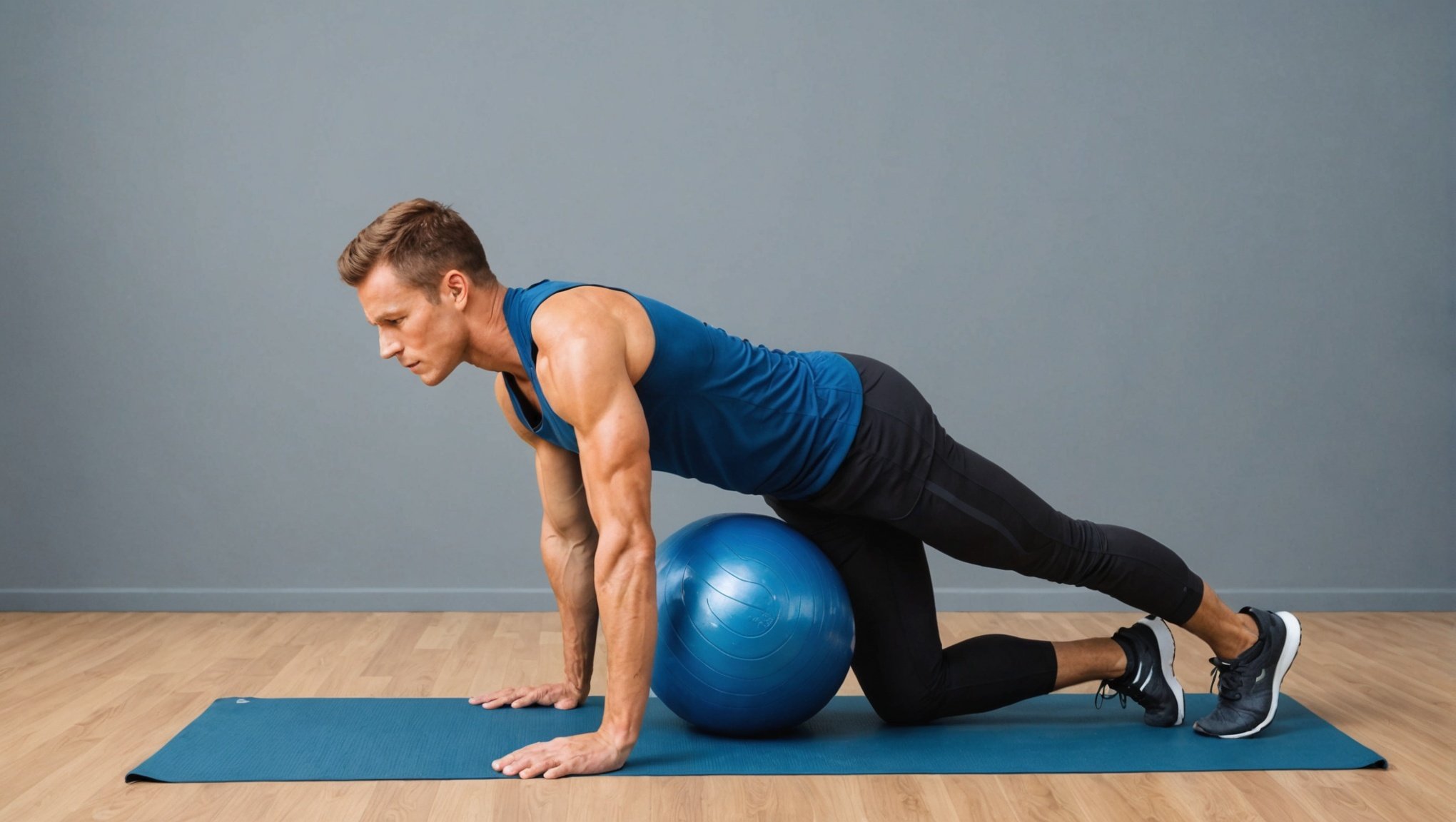If you’re an exercise enthusiast looking to maximize your lower body workouts, you’ll want to focus on gluteal activation. The glutes, or gluteal muscles, are a group of three muscles that make up the buttocks: the gluteus maximus, gluteus medius, and gluteus minimus. These muscles are vital for a variety of movements and can contribute significantly to your overall strength and fitness. In this article, we’ll explore the best exercises for activating your glutes during your lower body workouts.
Understanding the Importance of Gluteal Activation
Before we dive into the specific exercises, let’s first understand why gluteal activation is so important for your lower body workouts. The glutes are some of the most powerful muscles in the body. They help control movements such as walking, jumping, and squatting. However, due to modern sedentary lifestyles, many people have underactive glutes, leading to a variety of potential health problems such as lower back pain, poor posture, and decreased athletic performance.
Also to read : What specific ankle stabilization practices enhance deadlift stability?
Engaging your glutes properly during your workouts can help increase muscle strength, improve body posture, and enhance your overall athletic performance.
Top 5 Exercises for Gluteal Activation
Now let’s get into the meat of the matter – the best exercises for gluteal activation. These exercises target the glutes directly, ensuring you’re engaging these vital muscles effectively during your workout.
Also read : What are the specific benefits of compound versus isolation exercises in a strength routine?
Hip Thrusts
First on the list are hip thrusts. This exercise is an excellent way to target the gluteus maximus, the largest and most powerful of the three gluteal muscles. To perform this exercise, you’ll need a weight bench and a weight bar.
Start by sitting on the ground with your back against the bench. Your feet should be flat on the floor, and the weight bar should be across your hips. Then, push your hips upward until your body forms a straight line from your shoulders to your knees. Lower your hips back down, and that’s one rep.
Squats
Squats are another powerful exercise for gluteal activation. They target all three gluteal muscles, making them an efficient and effective choice for lower body workouts.
To perform a squat, stand with your feet hip-width apart. Extend your arms out in front of you for balance. Lower your body by bending at the knees and pushing your hips back, as if you’re sitting on an invisible chair. Squat down until your thighs are parallel to the ground, then push back up to standing position.
Lunges
Lunges are a great exercise for targeting the gluteus medius and minimus, the smaller gluteal muscles. These muscles are important for hip stability and movement.
To perform a lunge, start by standing straight with your feet shoulder-width apart. Step forward with one foot and lower your body until your front knee is at a 90-degree angle. Your back knee should hover just above the ground. Push back up to the starting position and repeat with the other leg.
Glute Bridge
Glute bridges specifically target the glutes and can be done with or without weights. To perform a glute bridge, lie flat on your back with your knees bent and your feet flat on the floor. Lift your hips off the ground until your knees, hips, and shoulders form a straight line. Hold this position for a few seconds before lowering your hips back to the ground.
Donkey Kicks
Donkey kicks are another great exercise for targeting the gluteus maximus. This exercise can be performed without any equipment, making it a versatile choice for any workout routine.
Start on all fours, with your hands directly under your shoulders and your knees directly under your hips. Keeping your right knee bent at a 90-degree angle, lift your right leg until your thigh is parallel with the floor and your foot is facing the ceiling. Lower your leg back down and repeat with the left leg.
Incorporating Glute Activation Exercises Into Your Routine
Now that you’re aware of the best exercises for gluteal activation, the next step is to incorporate them into your lower body workouts. A mix of these exercises will ensure that all three gluteal muscles are adequately activated and strengthened.
Remember to start with lower weights or even just body weight and gradually increase as your strength improves.
The Role of Proper Form and Consistent Training
Executing these exercises with proper form is crucial to achieving optimal gluteal activation. Improper form can lead to ineffective workouts or, worse, potential injury. If you’re unsure about your form, consider working with a personal trainer or physiotherapist.
Consistent training is equally important. Aim to incorporate these gluteal activation exercises into your lower body workouts at least two to three times a week. Over time, you should notice an improvement in your movement, strength, and overall physical performance.
In conclusion, gluteal activation is a vital aspect of lower body workouts. By incorporating the exercises mentioned above, you can maximize your workouts, boost your strength, and improve your overall physical fitness. Remember, proper form and consistency are key to achieving the best results.
Effective Training Techniques for Glute Activation
Now that we’ve identified the top exercises for gluteal activation, let’s delve into the training techniques that will provide the most benefit. Proper training techniques can significantly boost the effectiveness of your workouts, ensuring you get the most from your efforts.
Progressive Overload
The principle of progressive overload is essential in training for glute activation. This involves gradually increasing the intensity of your workouts over time, such as adding more weight to your barbell hip thrusts or increasing the number of sets and reps in your routine. This forces your muscles, including the gluteus maximus, to adapt and grow stronger.
Full Range of Motion
A full range of motion is crucial when performing glute exercises. This means you need to complete each movement from start to finish. For example, when performing a hip extension, ensure you’re lifting your leg as high as possible while keeping your hips stable. On the contrary, during split squats, you should lower your body as much as possible without compromising your form.
Variety
Including a variety of exercises in your routine is a good way to target all three glute muscles. Don’t just stick to squats and lunges; incorporate glute bridges, hip thrusts, and other activation exercises to ensure a well-rounded workout.
Unilateral Exercises
Unilateral exercises, such as single-leg squats or Bulgarian split squats, are great for glute activation. These exercises require more balance and stability, engaging the smaller gluteus medius and minimus muscles.
Rest and Recovery
Like all muscles, the glutes need time to recover and grow. Ensure you’re giving your glutes enough rest between workouts. Overworking can lead to decreased performance and increased risk of injury.
Conclusion: Maximizing Glute Activation for Better Performance
In summary, gluteal activation is an essential aspect of lower body workouts. Targeting the gluteus maximus, gluteus medius, and gluteus minimus through exercises like hip thrusts, glute bridges, and split squats can significantly improve your strength, stability, and overall athletic performance.
However, just knowing the exercises is not enough. Proper training techniques such as progressive overload, full range of motion, including a variety of exercises, and incorporating unilateral exercises can significantly increase the effectiveness of your workouts. Remember to allow for adequate rest and recovery to ensure your muscles have time to repair and grow.
The role of consistent training cannot be overstated. Make sure to incorporate these glute activation exercises into your regular training routine, at least two to three times a week. With time, you should see a notable improvement in your strength, mobility, and overall physical performance.
Keep in mind that proper form is paramount in all exercises. If you’re unsure about your form, it’s advisable to work with a personal trainer or physiotherapist to avoid injury and maximize your workout effectiveness.
In conclusion, maximizing glute activation is an effective way to boost your lower body workouts and improve your overall physical fitness. Stay consistent, maintain proper form, and with time, you’re likely to see remarkable progress in your strength, stability, and athletic performance.











